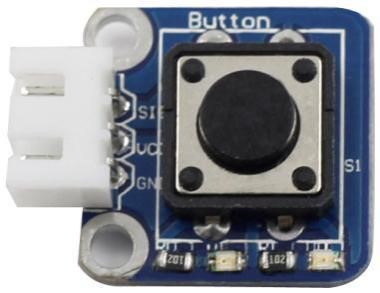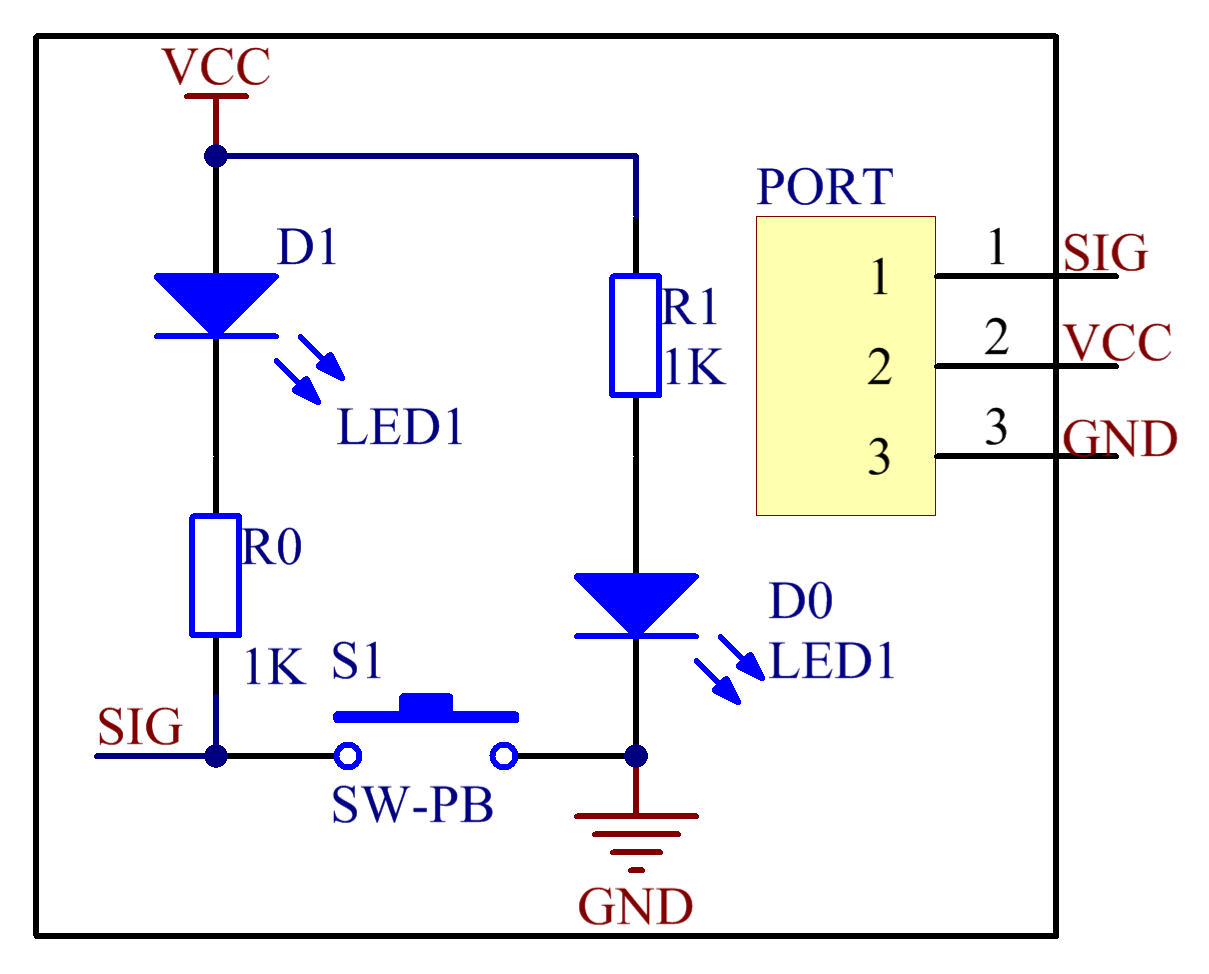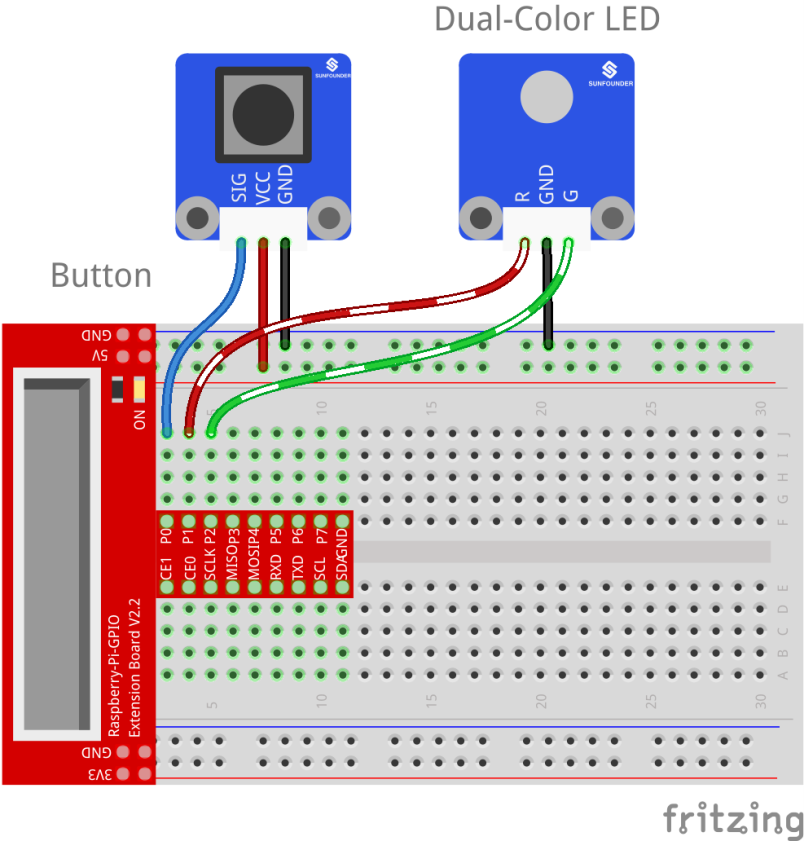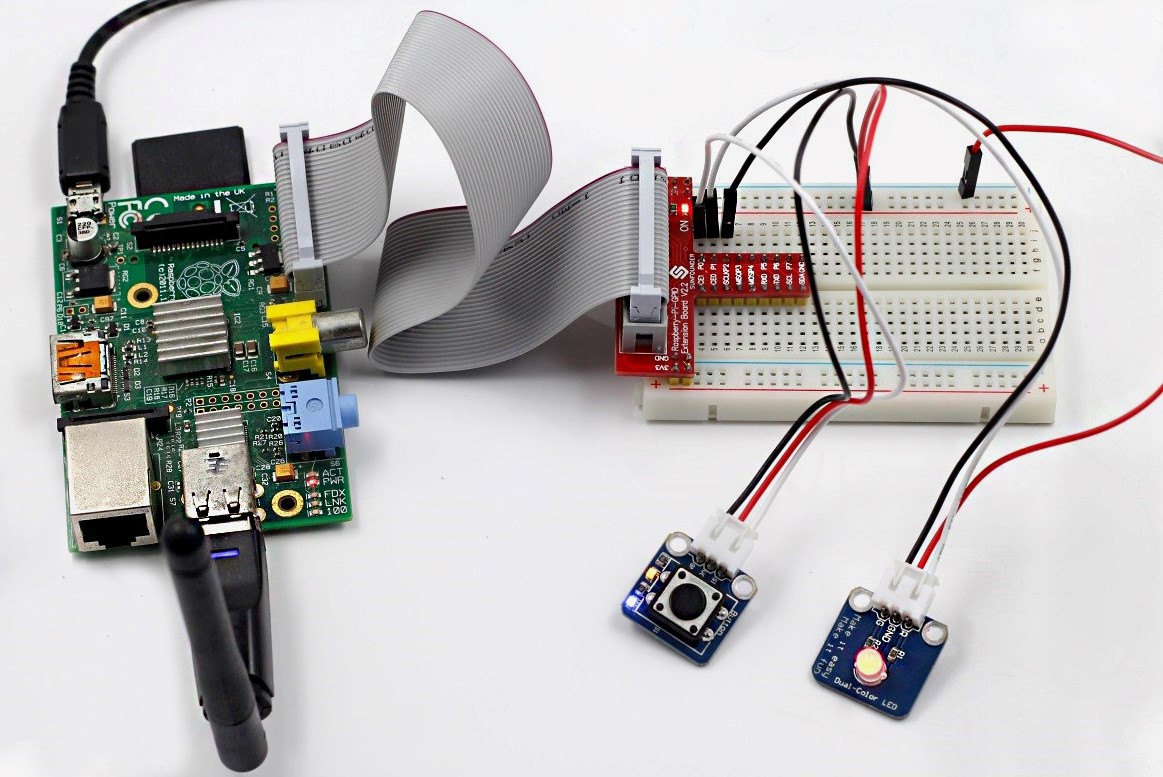Introduction
In this lesson, we will use a button module to control a dual-color LED module.

Components
– 1 * Raspberry Pi
– 1 * Breadboard
– 1 * Network cable (or USB wireless network adapter)
– 1 * Button module
– 1 * Dual-color LED module
– 2 * 3-Pin anti-reverse cable
Experimental Principle
Use a normally open button as an input device of Raspberry Pi. When the button is pressed, the General Purpose Input/Output (GPIO) connected to the button will change to low level (0V). You can detect the state of the GPIO through programming. That is, if the GPIO turns into low level, it means the button is pressed, so you can run the corresponding code. In this experiment, we will print a string on the screen and control an LED.
The schematic diagram:

Experimental Procedures
Step 1: Build the circuit
| Raspberry Pi | Button Module |
| GPIO0 | SIG |
| 5V | VCC |
| GND | GND |
| Raspberry Pi | Dual-Color LED Module |
| GPIO1 | R |
| GND | GND |
| GPIO2 | G |

For C language users:
Step 2: Change directory
cd /home/pi/SunFounder_SensorKit_for_RPi2/C/06_button/
Step 3: Compile
gcc button.c -lwiringPi
Step 4: Run
sudo ./a.out
For Python users:
Step 2: Change directory
cd /home/pi/SunFounder_SensorKit_for_RPi2/Python/
Step 3: Run
sudo python 06_button.py
The LED on the module will flash green. If you press the button, “Button pressed” will be printed on the screen and the LED will flash red. If you release the button, “Button released” will be printed on the screen and the LED will flash green again.

C Code
#include <wiringPi.h>
#include <stdio.h>
#define BtnPin 0
#define Gpin 1
#define Rpin 2
void LED(char* color)
{
pinMode(Gpin, OUTPUT);
pinMode(Rpin, OUTPUT);
if (color == "RED")
{
digitalWrite(Rpin, HIGH);
digitalWrite(Gpin, LOW);
}
else if (color == "GREEN")
{
digitalWrite(Rpin, LOW);
digitalWrite(Gpin, HIGH);
}
else
printf("LED Error");
}
int main(void)
{
if(wiringPiSetup() == -1){ //when initialize wiring failed,print messageto screen
printf("setup wiringPi failed !");
return 1;
}
pinMode(BtnPin, INPUT);
LED("GREEN");
while(1){
if(0 == digitalRead(BtnPin)){
delay(10);
if(0 == digitalRead(BtnPin)){
LED("RED");
printf("Button is pressed\n");
}
}
else if(1 == digitalRead(BtnPin)){
delay(10);
if(1 == digitalRead(BtnPin)){
while(!digitalRead(BtnPin));
LED("GREEN");
}
}
}
return 0;
}
Python Code
#!/usr/bin/env python
import RPi.GPIO as GPIO
BtnPin = 11
Gpin = 12
Rpin = 13
def setup():
GPIO.setmode(GPIO.BOARD) # Numbers GPIOs by physical location
GPIO.setup(Gpin, GPIO.OUT) # Set Green Led Pin mode to output
GPIO.setup(Rpin, GPIO.OUT) # Set Red Led Pin mode to output
GPIO.setup(BtnPin, GPIO.IN, pull_up_down=GPIO.PUD_UP) # Set BtnPin's mode is input, and pull up to high level(3.3V)
GPIO.add_event_detect(BtnPin, GPIO.BOTH, callback=detect, bouncetime=200)
def Led(x):
if x == 0:
GPIO.output(Rpin, 1)
GPIO.output(Gpin, 0)
if x == 1:
GPIO.output(Rpin, 0)
GPIO.output(Gpin, 1)
def Print(x):
if x == 0:
print ' ***********************'
print ' * Button Pressed! *'
print ' ***********************'
def detect(chn):
Led(GPIO.input(BtnPin))
Print(GPIO.input(BtnPin))
def loop():
while True:
pass
def destroy():
GPIO.output(Gpin, GPIO.HIGH) # Green led off
GPIO.output(Rpin, GPIO.HIGH) # Red led off
GPIO.cleanup() # Release resource
if __name__ == '__main__': # Program start from here
setup()
try:
loop()
except KeyboardInterrupt: # When 'Ctrl+C' is pressed, the child program destroy() will be executed.
destroy()
